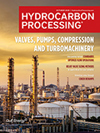Equipment
Biden administration releases $2.5 B for carbon capture programs
The Biden Administration announced $2.52 B in funding for two carbon management programs to catalyze investments in transformative carbon capture systems and carbon transport and storage technologies.
ExxonMobil is planning to startup new CDU at its Beaumont refinery
ExxonMobil is planning to start the new crude distillation unit (CDU) at its 369,024-bpd Beaumont, Texas (U.S.), refinery this weekend.
BB5 launch complements CPC Pumps International API 610 range
CPC International announced the launch of its new BB5 pump.
Chevron Phillips Chemical secures contracted long-term supply of advanced recycled plastic feedstocks
Nexus Circular has signed a long-term commercial agreement with Chevron Phillips Chemical for the supply of a significant volume annually of circular liquid feedstocks from a new advanced recycling facility.
Babcock & Wilcox win $14 MM to provide highly efficient cooling systems for UK waste-to-energy plants
Babcock & Wilcox's B&W Environmental business segment has been awarded contracts totaling more than $14 MM to design and supply highly efficient dry cooling systems for waste-to-energy plants in the UK.
Atlas Copco announces CO2 Learn & Lunch
Registration is open for the CO2 Lunch & Learn event being held by Atlas Copco Gas and Process at the Westin Galleria hotel in Houston, Texas. On February 17th 2023, visitors will gain insights into turbocompressor and centrifugal pump solutions for CO2 applications.
Key considerations for the optimum design of a hot oil system
In the hydrocarbon processing industry, where direct heating is not possible, a heat transfer medium is used. Steam has traditionally been the preferred heating medium.
A scalable mechanical integrity program to accelerate the energy transition—Mobile, visual and dynamic
As asset integrity and reliability managers, risk-based inspection (RBI) and corrosion analysts, and inspectors and contract inspection firms across asset-intensive industries look to optimize their mechanical integrity programs, there is a paradigm shift to implement a comprehensive, scalable and sustainable fixed-equipment reliability program to meet increasing reliability demands.
Efficient facilities embrace control system predictive maintenance
Hydrocarbon facilities are operating differently and managing more pressures than they did just 5 yr–10 yr ago.
Contextualize. Analyze. Optimize. Operationalize.
Uncertainty in global hydrocarbon markets has led to the tightening of belts on capital expenditures while new capacity comes online, driving prices lower and pinching profit margins.

- Ducor Petrochemicals, Blue Circle Olefins partner to create a fully circular supply chain for polypropylene 11/18
- World's first: Air Liquide’s innovative technology converts ammonia into hydrogen at industrial scale 11/18
- Borouge to supply advanced polyolefin solutions for next-generation vehicles 11/18
- ASTM International signs MoU with Gulf Cooperation Council Laboratory Company for Technical Services (GCC Lab TSCo.) 11/18
- KBC launches Visual MESA Energy Management System 7.3 11/18
- MHI Compressor secures steam turbine contract at Baton Rouge (U.S.) olefins plant 11/18




